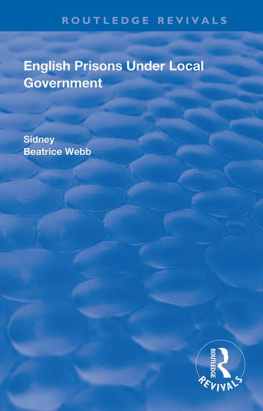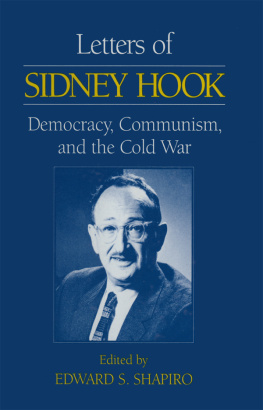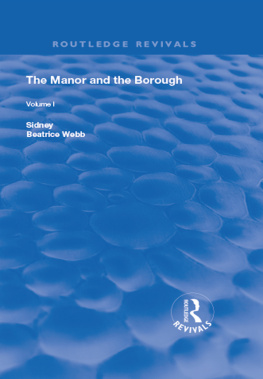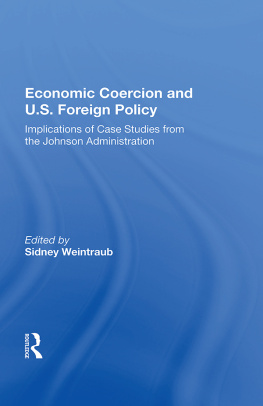PREFACE
Nothing of to-day, it may be suggested, can be really understood without its history. This, at any rate, is true of the complicated policy of the English Poor Law, which is now (1910) costing the public (for the United Kingdom) close upon twenty millions sterling every year; and which is producing, on the whole, results which led the Royal Commissioners of 1905-1909, without distinction of political or economic party or creed, to their unanimous and emphatic condemnatory verdict. That policy is embodied in a bewildering chaos of Statutes and Orders, Circulars and Minutes, general reports and official letters, the specific provisions of which, so far as they are contemporaneously in force, and so far as they are publicly known, the legal text-books and elementary manuals seek to re-arrange in such a way that the Poor Law Guardian or Workhouse Master may learn, at any rate, what is legally prescribed. But though a precise statement of what is to-day prescribed, in alphabetical or other order, may suffice for the practical work of the administrator, it does not afford us any idea of the general policy that lies behind the prescriptions, and fails even to enable the ordinary citizen to understand what is being done. We suggest, in short, that the English Poor Law policy of to-day cannot be correctly appreciated, or even intelligently comprehended, without some knowledge of the stages through which, in the course of the past seventy-five years, it has gradually been moulded into its present form. To any one who compares the contents of the Annual Report of the Local Government Board of to-day with those of the slim little volume in which the Poor Law Commissioners of 1835 described their activity, it will be evident that, throughout the whole range of the Poor Law, the Policy of the Central Authority has undergone great changes. What these changes have actually been, and at what dates and in what order they occurred, the following chronological analysis of the action of the Poor Law Commissioners, the Poor Law Board, and the Local Government Board for England and Wales attempts to set forth.
The extent, the complication, and what may be thought the aridity of this analysis may probably daunt many who ought to read it. But if they will persevere, they will find that the severe and exact chronological record through which they are taken with regard to each class of paupersthe Able-bodied, the Vagrants, the Sick, the Women, the Children, the Aged, etc.will presently reveal to them the current in which they are themselves moving, the stream of tendencies down which we are all floating, with a clearness of comprehension not otherwise to be obtained. It is here not a question of whether we approve of this evolution of policy, or of whether we should seek to promote or to resist it, but merely of what exactly it has been, and therefore now is.
In view of the attention given to the Poor Law by many writers, it is, perhaps, a matter for surprise, that no such chronological analysis of policy has before been undertaken. Except in regard to a few special matters, it is impossible, in any published work, to trace the exact course of development of English Poor Law policy since the great revolution of 1834. The most systematic books upon the English Poor Law System, such as those by Dr. Aschrott and Monsieur mile Chevalier, has limited himself to a series of essays on particular points, without attempting any but the briefest chronological analysis of the evolution of policy of the Central Authority since 1834, upon which the whole administration of the Boards of Guardians depends.
It is easy to understand this general reluctance to work out, from the materials themselves, the Poor Law history of the last three-quarters of a century. As with all nineteenth-century history, the extent, the variety, and the intricacy of the various sources are simply overwhelming. The number of official recordsStatutes, Orders, Circulars, Minutes, Reports, Letters, etc.dealt with for the present small volume (although we have confined ourselves in the main to the publications of the Central Authority itself, and have not been able to consult the manuscript records and letter-books of more than a score of the Boards of Guardians) runs into, literally, tens of thousands.
So great a mass of documentary material, without arrangement, unclassified, unindexed, formless, and void of any obvious significance, could be dealt with only by a systematic exploration. We may here describe, as an instance of sociological method, the plan that we adopted. What obscured the history was the manner in which masses of heterogeneous facts were heaped together. To read, one after another, these complicated Orders and lengthy Reports, each dealing with all kinds of paupers and various methods of relief, was but to accumulate confusion. They resembled a heap of geological conglomerates which could not be assayed until they had been broken up in such a way as to sort the different materials into separate homogeneous parcels. We discarded all idea of making prcis, summaries, or analyses of particular statutes or orders, believing that in this way brevity is gained only at the expense of omitting important qualifications. After the choice of a provisional scheme of classification, to which careful thought was given, the expressions of policy embodied in each document were all severally copied on loose sheets of paper of even size and shape. Every prescription or dictum conveying an expression of policy with regard to a particular class of paupers was placed upon a separate sheet. Thus, a single Order or Circular might yield items relating to women, to children, to persons on Outdoor Relief, to the sick, to the aged, and so on. However many and however closely related were the classes to which the same prescription applied, it was noted on a separate sheet for each of them, with the date and place and exact source. To deal in this way, with scrupulous accuracy and exhaustiveness, with all the Statutes, all the General Orders, all the Special Orders, all the Circulars, all the published Minutes, all the official reports, and all the letters of the Central Authority to which we could gain access absorbed something like nine months' continuous work. But for the first time order was evolved out of chaos. It was easy to sort the loose sheets by subjects, and to arrange each series chronologically. This done, we had before us, separated out from the mass, every prescription or dictum as to the policy to be pursued, or the action to be taken with regard to each particular class. The series of prescriptions and suggestions with regard to children, for instance, could be read in chronological sequence. At this stage it needed little ingenuity to seize the salient points. The development of policy leaped to the eyes. Another three months' work enabled the record to be put into a series of continuous narratives, with precise references to the original authorities.
The reader who wants merely to know what it all amounts to should turn to the last four chapters. Here he will find, succinctly set forth, first "The Principles of 1907," being the principles on which, as a matter of fact, the Local Government Board was (and still is) proceeding, in contrast with "The Principles of 1834," from which seventy-five years of experience have reluctantly driven it. In subsequent chapters will be found a critical examination of both the Majority and the Minority Reports of the Poor Law Commission of 1905-1909, in the light of these "Principles of 1834" and "Principles of 1907," with an attempt to appreciate what is novel in those Reports, and to estimate how far they are severally consistent with a due enforcement of personal responsibility. conclusion.











